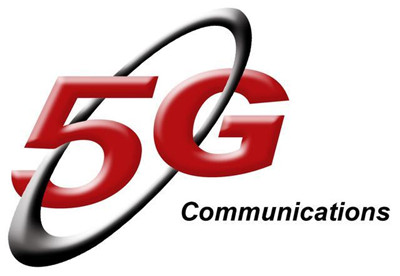(单词翻译:单击)
The gleaming metal and glass 5G laboratory being assembled on a campus at the University of Surrey, a few miles outside Guildford, speaks to British ambitions when it comes to building the next generation of mobile internet technology.
英国小镇吉尔福德(Guildford)郊外几英里处,萨里大学(University of Surrey)的校园里,人们正在组装一座由金属和玻璃建造的5G实验室。这所亮闪闪的实验室充分彰显出英国开发下一代移动互联网技术的雄心。
While many mobile phone users are only just upgrading to faster 4G networks, telecoms equipment providers are looking ahead to the next generation of mobile internet technology.
很多手机用户才刚刚升级到速度更快的4G网络,电信设备供应商已经在展望下一代移动互联网技术了。

Yet companies such as Vodafone and BT have not given the university funding to develop the technologies out of scholarly love. They are commercial partners that have bought a stake in any future profits generated by the centre as well as the chance to use the technology.
沃达丰(Vodafone)、英国电信(BT)等公司向萨里大学提供5G技术研发资金并非出于学术爱好。作为商业伙伴,它们投入资金是为了将来在该实验室产生的任何盈利中分一杯羹,同时也获得使用新技术的机会。
They are not the only companies racing to develop 5G. Labs run by Huawei, Ericsson, Nokia and Samsung are working flat out to produce the precious global patents that will underpin the future of mobile connectivity. Most hope to have some form of the technology in testing by 2018.
竞相开发5G技术的不只这些公司。华为(Huawei)、爱立信(Ericsson)、诺基亚(Nokia)和三星(Samsung)等公司的实验室也在全力开发宝贵的与5G相关的全球专利技术,这些技术将支撑移动连接的未来。大多数公司希望2018年能测试某种5G技术。
But while previous generations of mobile have been about making the internet faster, 5G will go one step further, according to Professor Rahim Tafazolli, head of 5G research at the University of Surrey. He says that it is expected to make the internet fast enough to make possible a whole host of new applications, from connected vehicles to the connective devices that will enable the internet of things. “5G will be the start of a new way to think about communications,” says Prof Tafazolli.
萨里大学5G研究负责人拉希姆•塔法佐利(Rahim Tafazolli)教授表示,前几代移动技术着眼于更快的互联网速度,而5G技术将更进一步。他说,5G技术预计将使互联网速度大为加快,使一系列新应用成为可能,从联网汽车到可连接设备等让物联网变得可行的事物。“5G将使人们以新的方式来思考通信,”塔法佐利教授说。
Ericsson believes there will be up to 50bn connected devices globally by 2022, when the technology is expected to start being rolled out commercially. The implications are profound.
爱立信认为,到2022年,全球可连接设备将多达500亿部,那时5G技术有望投入商业应用。其意义将是深远的。
Imagine, for example, a self-driving car that relied on a steady but constant stream of information beamed via the internet to operate. Unless the infrastructure that enabled connectivity was robust enough to allow information to be accessed all the time, it would be impossible for the car to work.
比如,我们可以想象一辆自动驾驶汽车,依靠互联网发送的持续、稳定的信息流来运行。除非基础设施能够提供非常可靠的连接,保证信息能够随时读取,否则这辆车是不可能正常工作的。
Network technology tends to evolve every 10 years. The first generation cellular network was launched in the 1980s and supported voice services only. It drove early mobile phone adoption but was problematic, with eavesdropping and cloning common. Using a phone abroad was impossible.
网络技术通常每10年演变一次。第一代蜂窝网络在上世纪80年代问世,只支持语音服务。该技术驱动了早期移动电话的使用,但存在种种问题,经常出现窃听和信息盗用现象。当时在国外使用手机也是不可能的。
In the 1990s, 2G became widespread and was able to support far more users and was more secure. This allowed the sending of “text messages”, and consumers were able to roam outside of their home country.
到了上世纪90年代,2G变得普及,能够支持远多于过去的用户,通话也更加安全。2G技术支持发送“短信”,用户可以在本国之外漫游通话。
The early 2000s saw the emergence of 3G, which supported high-speed data services as consumers increasingly began using broadband and the internet on mobile devices. A new breed of smartphone, capable of supporting video and mobile television, was born. From 2010, 4G allowed operators to use spectrum more efficiently, which meant the speed of accessing mobile data were about 10 times faster than 3G.
21世纪初出现的3G技术,支持高速数据服务,让消费者开始越来越多地在移动设备上使用宽带和互联网。支持视频和移动电视服务的新型智能手机于是诞生。从2010年开始,4G技术让运营商能够更高效地利用频谱,使得访问移动数据的速度比3G快10倍左右。
The next generation will be about more than the mobile phone. It will be about providing connectivity over the airwaves to billions of devices that in future will require access to the internet, ranging from driverless cars to smart cities.
下一代技术将不仅仅应用在手机上,而且还将为数以十亿计、未来需要接入网络的设备——从无人驾驶汽车到智能城市设施——提供无线连接。


